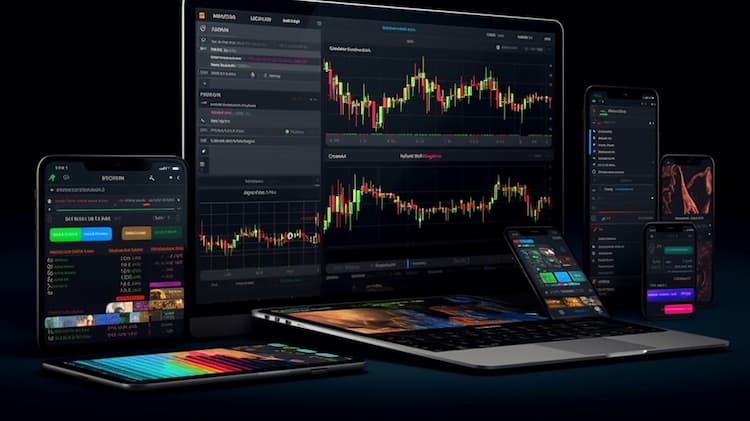
Media ETFs to invest in the United States
If you're looking to invest in the media sector in the United States, media exchange-traded funds (ETFs) can provide a diversified and convenient option. In this article, we will explore some of the top media ETFs available, highlighting their potential for growth and exposure to various segments of the media industry. Whether you're interested in television, film, streaming services, or advertising, these ETFs offer opportunities to capitalize on the evolving landscape of media.
Media ETFs: Understanding the Media Industry
The media industry has witnessed significant growth and transformation in recent years, driven by advancements in technology and changes in consumer behavior. As an investor, it's essential to understand the dynamics of this industry and identify opportunities for potential investment. Exchange-Traded Funds (ETFs) focused on the media sector can offer exposure to a diversified portfolio of media-related companies. These ETFs provide an efficient way to invest in the media industry, allowing investors to benefit from its growth potential.
One notable media ETF is the Invesco Dynamic Media ETF (PBS). This ETF seeks to track the performance of the Dynamic Media Intellidex Index, which is composed of U.S. media companies. The fund utilizes a multifactor approach, considering various fundamental and quantitative factors in the stock selection process. PBS offers exposure to media companies engaged in broadcasting, publishing, advertising, social media, and other related industries. It aims to provide investors with capital appreciation by capturing the potential growth in the media sector.
Media ETFs: Comparing Media ETFs
When comparing media ETFs, it's crucial to assess their holdings, expense ratios, performance, and specific investment strategies. Another media-focused ETF to consider is the Global X Social Media ETF (SOCL). SOCL aims to track the performance of the Solactive Social Media Index, which includes companies involved in social networking, file sharing, and other web-based media applications. This ETF offers exposure to global social media companies, including industry giants like Facebook, Twitter, and Snap Inc.
While both PBS and SOCL target the media sector, they have different investment approaches and areas of focus. PBS includes a broader range of media-related companies, encompassing broadcasting, publishing, and advertising sectors, while SOCL concentrates specifically on social media companies. Investors should consider their investment objectives, risk tolerance, and desired exposure to determine which ETF aligns better with their investment strategy.
 SOCL overlap What are the best media ETFs to invest in the United States?
SOCL overlap What are the best media ETFs to invest in the United States?
Media ETFs: Growth Potential in the Media Industry
The media industry continues to evolve and present growth opportunities driven by factors such as increasing digital consumption, content streaming, and advertising trends. As consumers' preferences shift towards online platforms and digital media, companies that adapt and capitalize on these trends have the potential for significant growth. Media ETFs can provide exposure to a diversified basket of companies within the industry, allowing investors to participate in this growth potential.
In addition to PBS and SOCL, other media-related ETFs worth considering include the Communication Services Select Sector SPDR Fund (XLC) and the Invesco Dynamic Media & Entertainment ETF (PBSK). XLC seeks to track the performance of the Communication Services Select Sector Index, which includes companies from the communication services sector, including media, entertainment, and telecommunications. On the other hand, PBSK aims to provide exposure to U.S. media and entertainment companies, utilizing a factor-based methodology to select stocks.
Media ETFs: Considerations for Investing in Media ETFs
When considering an investment in media ETFs, investors should evaluate their investment goals, risk tolerance, and time horizon. It's essential to conduct thorough research, review the ETF's prospectus, and understand the underlying index or strategy. Additionally, monitoring the expense ratio, liquidity, and historical performance can provide valuable insights into the ETF's potential.
Investing in media ETFs can offer a diversified approach to gain exposure to the media industry while spreading out investment risk. However, it's important to note that all investments come with inherent risks, and past performance is not indicative of future results. It is always advisable to consult with a financial advisor or do further research before making any investment decisions.
Conclusion
In summary, media ETFs provide investors with an opportunity to access the potential growth and diversification offered by the media industry. ETFs like Invesco Dynamic Media ETF (PBS) and Global X Social Media ETF (SOCL) offer exposure to media companies, albeit with different investment strategies and areas of focus. Investing in media ETFs allows individuals to participate in the growth potential of the media industry while mitigating individual stock risks through diversification.
Disclaimer: This article is for informational purposes only and is not providing any investment advisory services. Investors should carefully consider their investment objectives, risk tolerance, and conduct thorough research before making any investment decisions.
Sources:
https://www.invesco.com/ PBS ETF issuer
https://www.invesco.com/us/financial-products/etfs/product-detail?audienceType=Institutional&ticker=PBS PBS ETF official page
FAQ
What are media ETFs?
Media ETFs are exchange-traded funds that focus on companies within the media industry. These ETFs typically hold a diversified portfolio of media-related stocks, which may include companies involved in broadcasting, publishing, entertainment, advertising, and other media-related activities.
What factors should I consider when evaluating media ETFs?
When evaluating media ETFs, it's important to consider factors such as the ETF's expense ratio, liquidity, underlying index or methodology, holdings diversification, historical performance, and the specific media sub-sectors or companies it targets. Additionally, investors should assess their own investment goals, risk tolerance, and time horizon.
Which media ETFs are popular in the United States?
Some popular media ETFs in the United States include the Invesco Dynamic Media ETF (PBS), the Communication Services Select Sector SPDR Fund (XLC), and the iShares U.S. Consumer Services ETF (IYC). These ETFs provide exposure to media companies along with other related sectors.
What are the advantages of investing in media ETFs?
Investing in media ETFs offers several advantages. They provide diversification across a range of media companies, reducing the risk associated with investing in individual stocks. Additionally, media ETFs offer convenience, liquidity, and potential growth opportunities within the media industry.
What are some examples of media sub-sectors covered by media ETFs?
Media ETFs cover a wide range of sub-sectors within the industry. These may include broadcasting companies, cable operators, movie studios, streaming services, advertising agencies, publishing companies, social media platforms, and telecommunications companies that provide media-related services.





